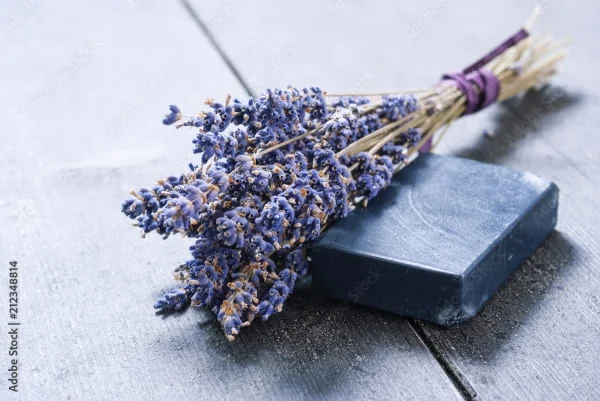


Lavender has been used for centuries for its calming properties, making it an ideal companion for meditation practices. This aromatic herb is renowned not only for its soothing scent but also for its ability to reduce stress, anxiety, and promote a sense of tranquility. In this article, we will explore the various ways lavender can enhance your meditation practice, from using it in essential oils and herbal teas to incorporating it into your meditation space and rituals. We'll delve into the science behind lavender's effects on the mind and body, practical applications, and how to integrate this powerful herb into your daily meditative routines.
1.1 The Chemistry of Lavender
Lavender's calming effects are primarily due to its essential oil, which contains compounds such as linalool and linalyl acetate. These compounds have been shown to have anxiolytic (anxiety-reducing) and sedative properties. When inhaled, these compounds interact with the olfactory system, sending signals to the brain that help reduce stress and promote relaxation. Studies have demonstrated that lavender can lower heart rate, blood pressure, and cortisol levels, all of which are indicators of reduced stress.
1.2 Lavender and the Nervous System
Lavender's interaction with the nervous system is a key reason it is so effective in supporting meditation practices. The scent of lavender has been shown to affect the parasympathetic nervous system, which is responsible for the body's rest and digest functions. By activating this system, lavender helps to calm the body and mind, making it easier to enter a meditative state. Additionally, lavender's ability to modulate the release of neurotransmitters like serotonin and dopamine further enhances its mood-stabilizing effects.
2.1 Creating a Calming Atmosphere
A well-prepared meditation space is essential for a successful practice, and lavender can play a significant role in setting the right atmosphere. Start by ensuring that your meditation space is clean, clutter-free, and filled with natural light. Next, introduce lavender into the space through various methods such as essential oils, dried lavender bundles, or lavender-scented candles. The goal is to create an environment that immediately calms the senses and helps you transition into a meditative state.
2.2 Lavender Essential Oil Diffusers
One of the most effective ways to incorporate lavender into your meditation space is by using an essential oil diffuser. Diffusers disperse the lavender oil into the air, allowing you to inhale its calming aroma throughout your meditation session. To use, fill the diffuser with water and add a few drops of lavender essential oil. Turn it on a few minutes before you begin your meditation to allow the scent to fill the room. The continuous release of lavender oil during your practice will help maintain a state of relaxation and focus.
2.3 Lavender Sachets and Pillows
Another way to introduce lavender into your meditation space is by using lavender sachets or pillows. These can be placed around the room, on your meditation cushion, or even held in your hands during meditation. Lavender sachets and pillows release a gentle, consistent scent that can help ground you during your practice. Additionally, lavender pillows can be used as an eye pillow during savasana (a relaxation pose often used in yoga) or as a support for your neck or lower back during seated meditation.
2.4 Incorporating Dried Lavender in Decor
Dried lavender can also be used as a decorative element in your meditation space. Arrange dried lavender stems in a vase or create small bundles to hang on the walls. The presence of lavender in its natural form not only adds a visual element of calmness but also contributes to the overall sensory experience. The subtle fragrance from dried lavender will permeate the space, offering a gentle reminder of its calming properties.

3.1 Lavender-Inspired Breathing Techniques
Breathwork is a fundamental aspect of meditation, and lavender can be used to enhance this practice. Before beginning your meditation, take a few deep breaths while holding a piece of dried lavender or inhaling lavender essential oil. Focus on the scent as you breathe in deeply through your nose and exhale slowly through your mouth. This practice helps to center your mind and prepare your body for meditation. Incorporating lavender into your breathwork can deepen your sense of relaxation and mindfulness.
3.2 Lavender in Visualization Practices
Visualization is a powerful meditation technique that involves creating mental images to promote relaxation and focus. Lavender can be used as a focal point in your visualization practice. For example, you might imagine yourself walking through a lavender field, feeling the soft petals under your fingertips and inhaling the sweet, calming scent. This visualization can help you tap into a deeper state of relaxation and create a peaceful mental landscape for your meditation.
3.3 Guided Meditation with Lavender
Guided meditation is a popular method for those who find it challenging to meditate on their own. You can enhance your guided meditation practice by incorporating lavender. Start by diffusing lavender essential oil or lighting a lavender-scented candle before beginning the guided session. The presence of lavender will help you stay relaxed and focused as you follow the meditation guide. Additionally, some guided meditations specifically focus on using lavender as a tool for relaxation, guiding you through visualizations and breathwork centered around the herb.
3.4 Lavender for Mindful Touch
Mindful touch involves bringing awareness to physical sensations during meditation. Lavender can be used in this practice by gently rubbing a few drops of lavender essential oil onto your temples, wrists, or chest before you begin. As you meditate, focus on the feeling of the oil on your skin, the warmth it generates, and the soothing scent it releases. This practice helps to anchor your mind in the present moment and deepen your connection to your body.
4.1 Benefits of Lavender Tea
Lavender tea is a simple and effective way to incorporate the calming effects of lavender into your meditation practice. Drinking a cup of lavender tea before or after meditation can help relax the body, soothe the nervous system, and enhance your overall sense of well-being. Lavender tea is also known to improve digestion, reduce headaches, and promote restful sleep, making it an excellent addition to your meditation routine.
4.2 How to Prepare Lavender Tea
Preparing lavender tea is easy and can be done with either fresh or dried lavender flowers. To make the tea, simply steep a teaspoon of dried lavender flowers in hot water for 5-10 minutes. Strain the flowers and enjoy the tea warm. You can also blend lavender with other calming herbs such as chamomile, lemon balm, or peppermint for a more complex flavor and enhanced relaxation benefits.
4.3 Lavender Tea Rituals
Incorporating a tea ritual into your meditation practice can add an extra layer of mindfulness and intention. Before beginning your meditation, take a few moments to mindfully prepare and enjoy a cup of lavender tea. Focus on the process of making the tea, the warmth of the cup in your hands, and the soothing aroma. As you drink the tea, allow yourself to fully experience the taste and warmth, letting it calm your mind and body in preparation for meditation.
5.1 The Role of Aromatherapy in Meditation
Aromatherapy is the use of essential oils and natural scents to promote physical and emotional well-being. In meditation, aromatherapy can be a powerful tool for enhancing focus, relaxation, and emotional balance. Lavender, with its calming and mood-stabilizing properties, is one of the most commonly used essential oils in aromatherapy for meditation.
5.2 Lavender Aromatherapy Techniques
There are several ways to incorporate lavender aromatherapy into your meditation practice:
5.3 Blending Lavender with Other Essential Oils
While lavender is effective on its own, it can also be blended with other essential oils to create a customized aromatherapy experience. Consider combining lavender with oils such as:
Experiment with different combinations to find the blend that best supports your meditation goals.
6.1 The Synergy of Scent and Sound
Sound meditation, which uses vibrations from instruments like singing bowls, chimes, or gongs, can be greatly enhanced by the addition of lavender. The combination of calming scents and soothing sounds creates a multi-sensory experience that deepens relaxation and meditation. Lavender’s calming scent works in harmony with the vibrations produced by sound meditation tools, helping to create a deeper connection between the mind, body, and spirit. This synergy can be particularly powerful in group meditation settings, where the combined effects of sound and lavender can create a collective sense of calm and unity.
6.2 Incorporating Lavender in Sound Meditation Practices
To incorporate lavender into your sound meditation practice, consider the following methods:
7.1 Integrating Lavender into Yoga Practices
Yoga is a form of moving meditation that combines physical postures, breathwork, and mindfulness to promote mental and physical well-being. Lavender can enhance your yoga practice by promoting relaxation, reducing stress, and helping you stay present. Here are some ways to incorporate lavender into your yoga routine:
7.2 Lavender in Tai Chi and Qigong
Tai Chi and Qigong are ancient Chinese practices that involve slow, flowing movements combined with breathwork and meditation. These practices are designed to cultivate and balance the body's energy, known as "qi" or "chi." Lavender can be integrated into these movement meditations to support relaxation and enhance the flow of energy.
8.1 Lavender in Mindfulness Meditation
Mindfulness meditation involves bringing your full attention to the present moment, often by focusing on your breath, bodily sensations, or a specific object. Lavender can be a powerful aid in mindfulness practices by providing a sensory anchor that helps you stay present.
8.2 Lavender in Chakra Meditation
Chakra meditation focuses on balancing the body's seven energy centers, or chakras. Lavender is particularly associated with the crown chakra, located at the top of the head, which is connected to spiritual awareness, higher consciousness, and enlightenment.

9.1 Choosing High-Quality Lavender Products
When using lavender in meditation, it's important to choose high-quality products to ensure you receive the full benefits of the herb. Look for organic, pure lavender essential oils and dried lavender that is free from additives or synthetic fragrances. High-quality lavender will have a more potent aroma and stronger therapeutic properties.
9.2 Experimenting with Different Lavender Varieties
There are several varieties of lavender, each with slightly different scents and properties. English lavender (Lavandula angustifolia) is the most commonly used variety for its sweet, floral scent and calming effects. However, you might also explore other varieties such as French lavender (Lavandula dentata), which has a more camphor-like scent, or Spanish lavender (Lavandula stoechas), which has a stronger, more resinous fragrance. Experiment with different types to find the one that resonates most with your meditation practice.
9.3 Incorporating Lavender into Daily Life
Beyond formal meditation sessions, lavender can be integrated into your daily life to support ongoing mindfulness and relaxation. Consider using lavender in your bath, as a natural air freshener, or in your skincare routine. By surrounding yourself with lavender, you can create an environment that continuously supports your meditation practice and overall well-being.
Lavender is a versatile and powerful ally in meditation practices, offering a wide range of benefits that enhance relaxation, focus, and spiritual connection. Whether you’re using lavender essential oils, dried lavender, or lavender-infused products, this aromatic herb can help deepen your meditation experience and support your journey toward inner peace and mindfulness.
By understanding the science behind lavender's calming effects and exploring the various ways to incorporate it into your meditation routines, you can create a personalized practice that nurtures your mind, body, and spirit. Whether you’re a seasoned meditator or just beginning your journey, lavender offers a gentle, natural way to enhance your practice and cultivate a deeper sense of tranquility and well-being.